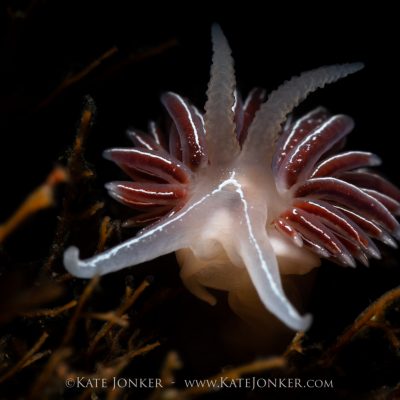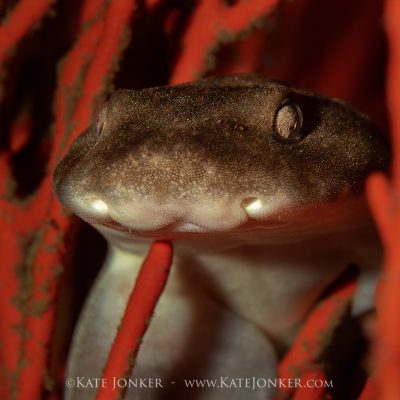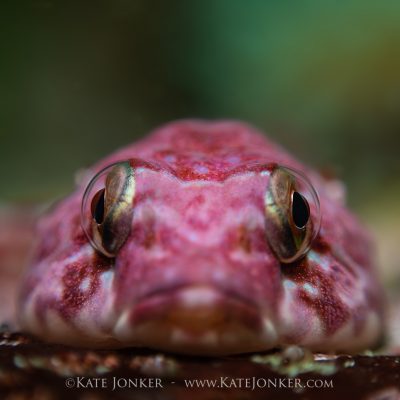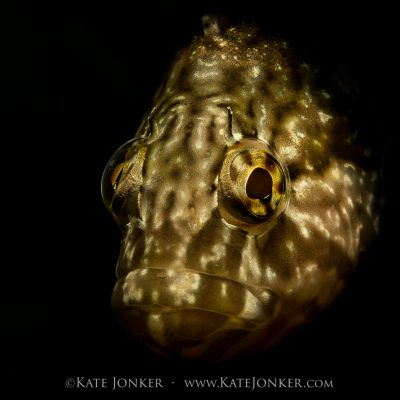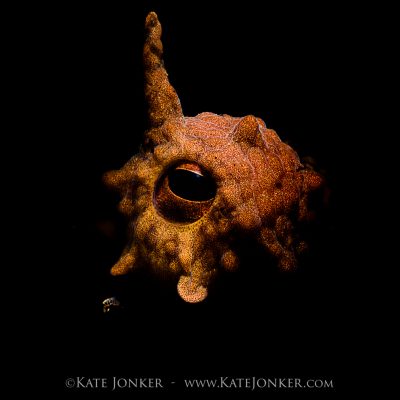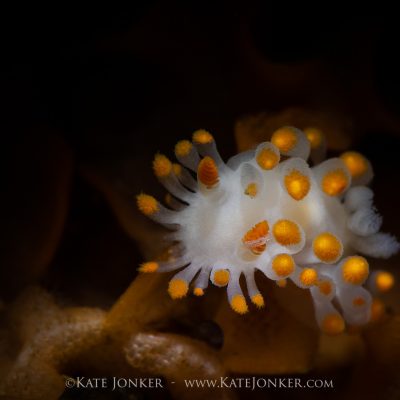
Cape Town, known as South Africa’s Mother City, is a colourful and cosmopolitan travel destination. Surrounded by incredible scenery and tourist attractions such as Table Mountain, Robben Island and Cape Point, it is often overlooked by visiting divers who come to South Africa for the annual sardine run or to dive with sharks at Protea Banks or Aliwal Shoal.
Cape Town’s natural beauty stretches far beyond the shoreline and is reflected beneath the waves, providing divers and photographers with a vibrant and diverse underwater playground. There are fascinating wrecks, glittering kelp forests and colourful reefs to be explored, offering underwater photographers with incredible wide angle and macro opportunities,
Wide Angle Photography
Many of the reefs have fantastic topography well suited for wide angle photography. Most reefs are covered in colourful marine life, anemones, sponges and soft corals in beautiful pinks, purples, yellows and oranges. Orange sea fans add to the riot of colour on the reefs, which contrasts beautifully against the green, temperate waters. Reefs well worth visiting include Atlantis, Photographer’s Reef and Whittle Rock in Simon’s Town; Steenbras Deep in Gordon’s Bay and Star Walls in Hout Bay.
The wrecks of Smitswinkel Bay in Simon’s Town and in Hout Bay provide those with a lust for rust the chance to explore and photograph unique wrecks, many of which are covered in colourful soft corals, sponges and anemones. They also attract schools of fish, providing a confetti of silver glitter against the hulks of the wrecks themselves.
There are also numerous kelp forests to explore and these provide remarkable wide angle opportunities. The forests are home to many fish species, smaller sharks and seals. The reefs upon which the kelp forests grow are covered with vibrant jewel-like anemones, starfish, sea urchins, sponges and feather stars. There is nothing more beautiful than photographing the sun’s rays as they filter through the kelp fronds, lighting up the reef below. Many of the reefs such as Pyramid Rock, Castle Rock and D-Frame in Simon’s Town and Blousteen in Gordon’s Bay provide incredible kelp forest dives.
A trip to Cape Town would not be complete without a snorkel or a dive with the Cape fur seals. They are playful and inquisitive and a lot of fun to photograph. The best dive sites to see these ‘puppies of the sea’ are Partridge Point in Simon’s Town and Duiker Island in Hout Bay. Seals are plentiful in Cape Town and it is not unusual to have seals swoop down and inspect you at any of the dive sites in Simon’s Town, Gordon’s Bay or Hout Bay.
Dives “into the blue” to see the blue sharks and makos are very exciting. The dive boats take divers out to the edge of the warm Agulhas current some 20 nautical miles off Cape Point. This warmer water tends to be clearer and bluer, providing a wonderful blue backdrop to the sharks one can encounter out there.
Macro Photography
There are many colourful and fascinating macro subjects to photograph in Cape Town’s nutrient-rich waters. Macro life is plentiful and incredibly diverse, with a large number of unique species that can only be found on the reefs in Simon’s Town, Gordon’s Bay and Hout Bay.
As diving conditions can be unpredictable, many dive shops advise their customers “when in doubt, go macro”. Underwater photographers will be kept busy an entire dive with the numerous critters that can be found on the reefs and in the kelp forests.
For nudibranch fanatics, ‘nudis’ can be found everywhere. They range in size from just a few millimetres to just over 10cm in length. Most famous are the beautiful blue and yellow gasflame nudibranchs, inkspot nudibranchs, Cape dorids, frilly nudibranchs, coral nudibranchs, whip fan nudibranchs and variable dorids. There is even a nudibranch called the Mandela nudibranch that can be found on some reefs, most notably at Steenbras Deep in Gordon’s Bay. The best dive sites for nudibranchs include Steenbras Deep, Blousteen and Stone Dog in Gordon’s Bay as well as Photographer’s Reef, A-Frame and Roman Rock in Simon’s Town.
Other macro life includes pipefish, spider crabs, common and bobtail cuttlefish, octopus, sea spiders, flatworms, strawberry anemones, feather stars, amphipods, tubular hydroids, basket stars and quirky little fish such as tiny smoothskin scorpion fish, rock suckers (which are all head and no body!), blennies and Cape triplefins as well as the many colourful and inquisitive species of klip fish. The strange and unusual horse fish and white sea catfish can also be spotted on deeper reefs such as Steenbras Deep in Gordon’s Bay as well as at Whittle Rock in Simon’s Town.
Where to dive
It is important to note that when you visit will determine the best place to dive. In summer (October to April), the predominant wind is the south easterly and this brings flatter sea and clearer conditions to Hout Bay on the western side of the Cape Peninsula and Gordon’s Bay on the eastern side of False Bay. In winter (May to September), the predominant wind is the north westerly, which brings flatter sea and clearer water to the area surrounding Simon’s Town on the western side of False Bay.
It is a good idea to contact your dive centre the day before to find out where you will be diving as some sites are more suited to macro photography. Visibility is also quite changeable and can vary from 5m to 20m at any time of the year, and enquiring about the destination and visibility could help you decide what lense to use.
Water temperatures
Ocean temperatures can range quite drastically from area to area. The water along the western side of the Cape Peninsula is brought up from the Antarctic by the cold Benguela current and you can expect water temperatures of between 8°C and 13°C when diving from Hout Bay in summer.
The water in False Bay is much warmer and temperatures along the Simon’s Town and Gordon’s Bay coastlines average between 12°C and 15°C in winter and up to 19°C in summer.
What to wear
To remain comfortable whilst diving in Cape Town, a 7mm wetsuit or semi-dry with booties, hood and gloves are advised. A dive computer and deployable surface marker buoy with reel are also recommended for all divers.
The diving
Most diving is done from eight-metre-long rubber ducks, known as RIBs or zodiacs in other parts of the world. The standard procedure is for divers to put their gear together on land, after which it is loaded onto the boat where the skipper will secure it to dive racks. Many dive operators provide plastic crates for larger cameras and some divers with smaller compacts often bring their cameras on board in soft, padded cooler bags.
Divers then don wetsuits and booties and climb on board. Most boats launch from either the Simon’s Town, Hout Bay or Gordon’s Bay harbours and once at the dive site, the divers kit up for the dive, usually with the assistance of a dive guide or the skipper. When everyone is ready to enter the water, the skipper will slowly count “one, two, three, go!” and the divers all roll backwards into the water at the same time, on the word “go”. Underwater photographers can either roll backwards with their cameras or have them handed to them by the skipper.
Divers can usually choose to dive with a dive guide or dive in buddy pairs, exploring the reefs at their own pace. This is a suitable arrangement for photographers and more experienced divers who can take their time instead of rushing to keep up with the dive guide. At the end of the dive, buddy pairs deploy their surface marker buoy and the dive boat will come to pick them up. It is therefore important for all divers to have their own dive computers and surface marker buoys with them on every dive. Dives tend to be limited by bottom time or a maximum of 60 minutes, whichever comes first.
Underwater photographers are well looked after at all the top dive centres and the skippers and boat crew are used to handling cameras and underwater photography equipment. The operators are incredibly well organised and diving here is enjoyable, relaxed and stress free.
Cape Town should not be overlooked by visiting divers, and with year round diving – whether it be kelp forests, reefs or wrecks, shallow or deep, wide angle or macro – there is something for everyone in this beautiful underwater paradise!




